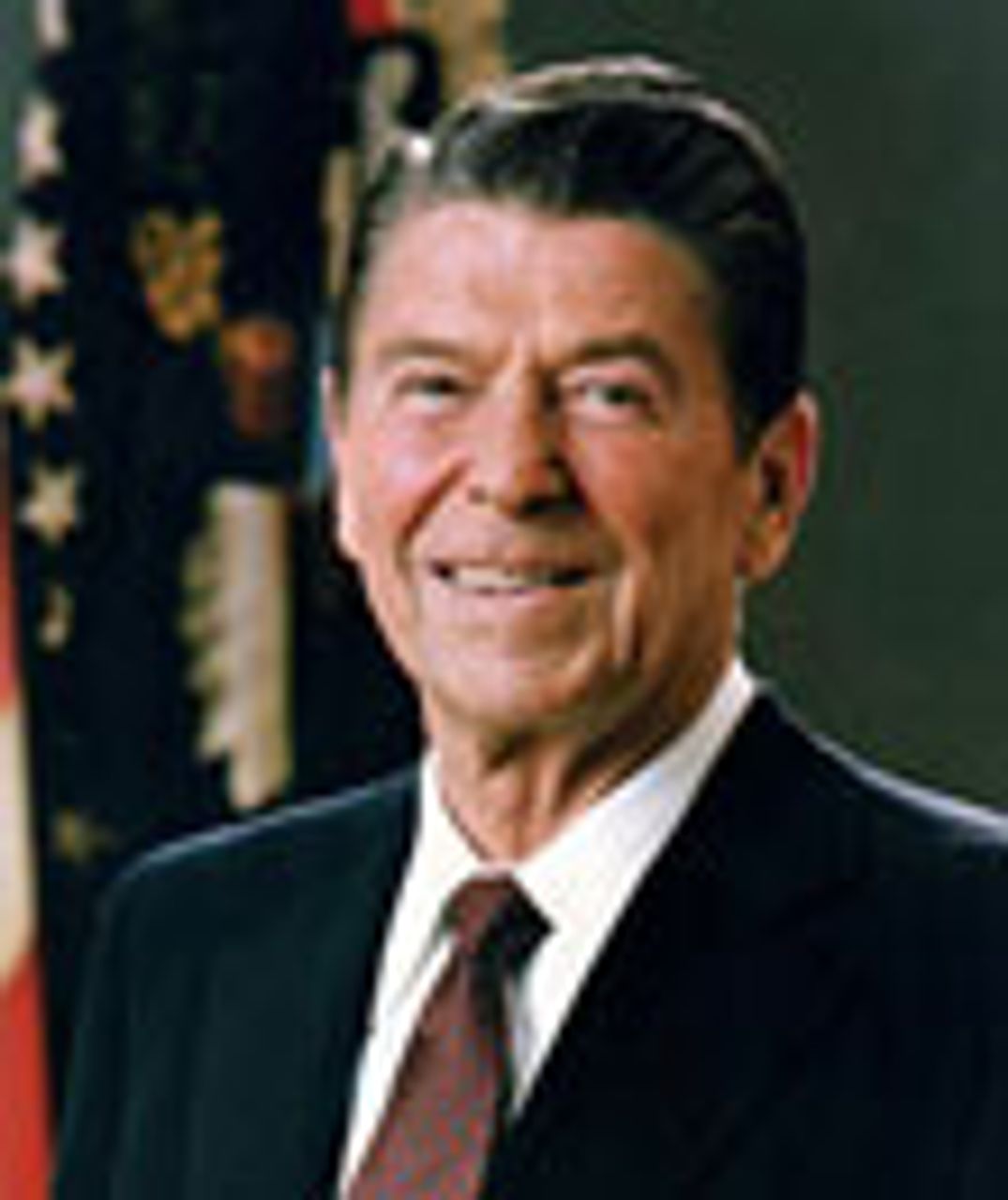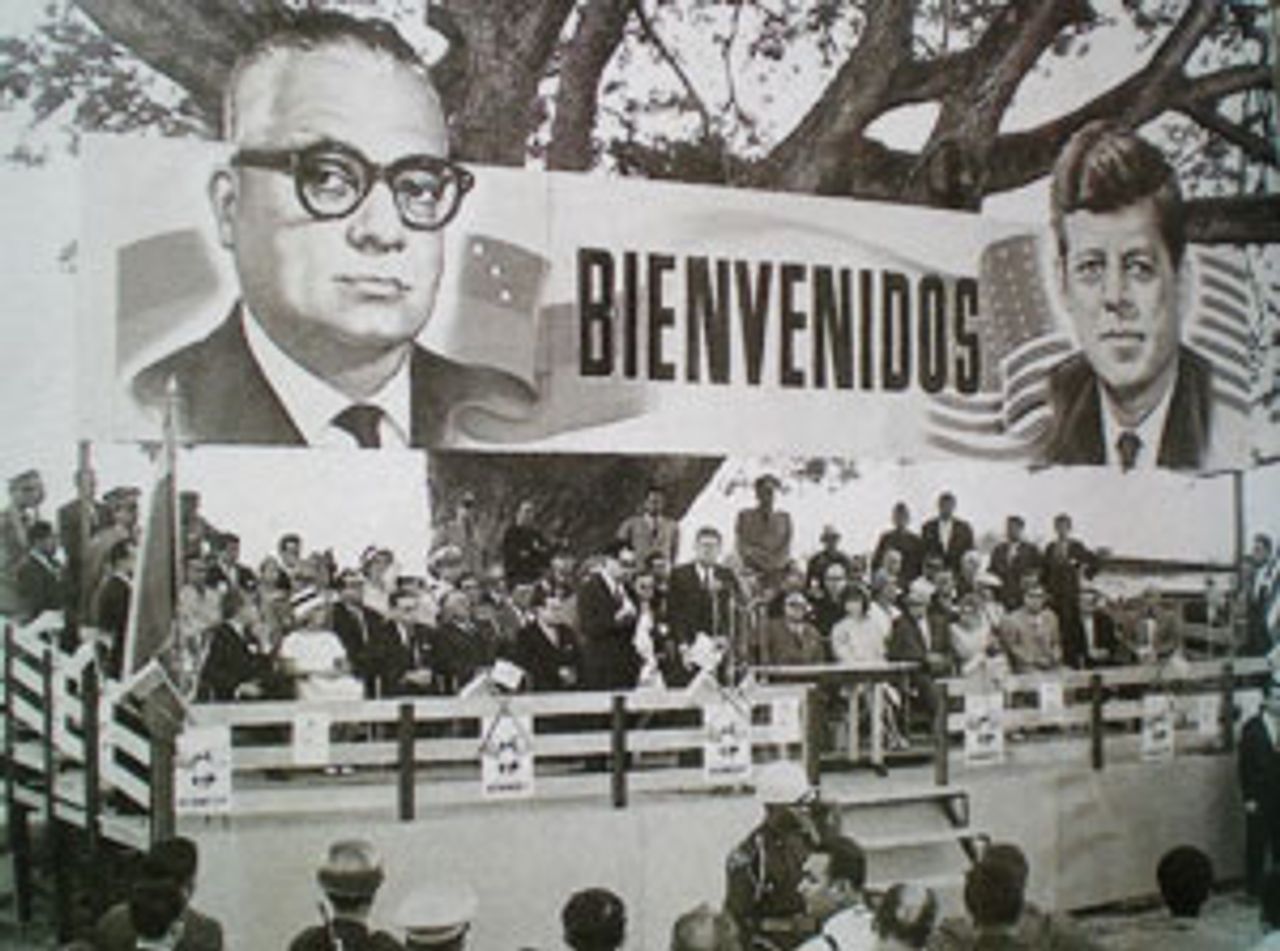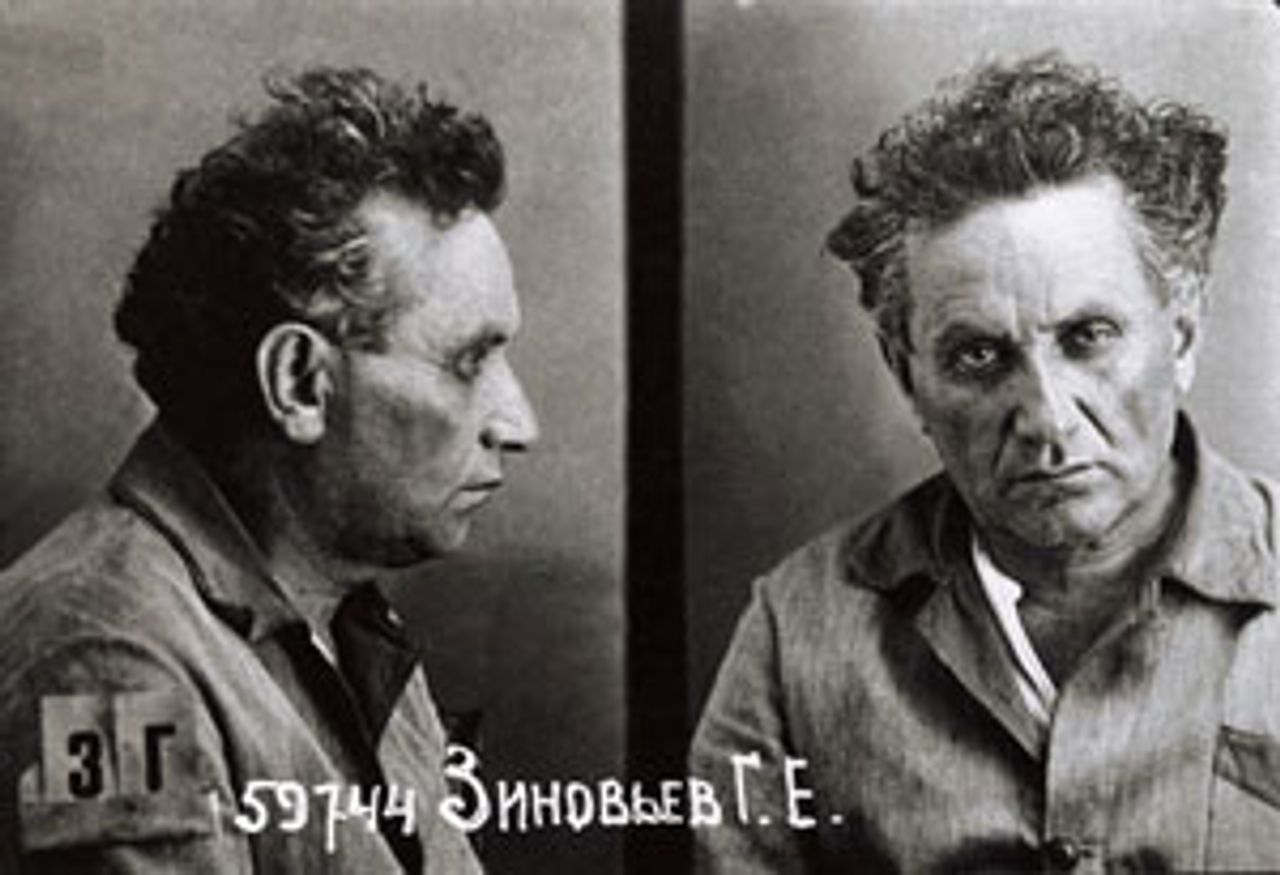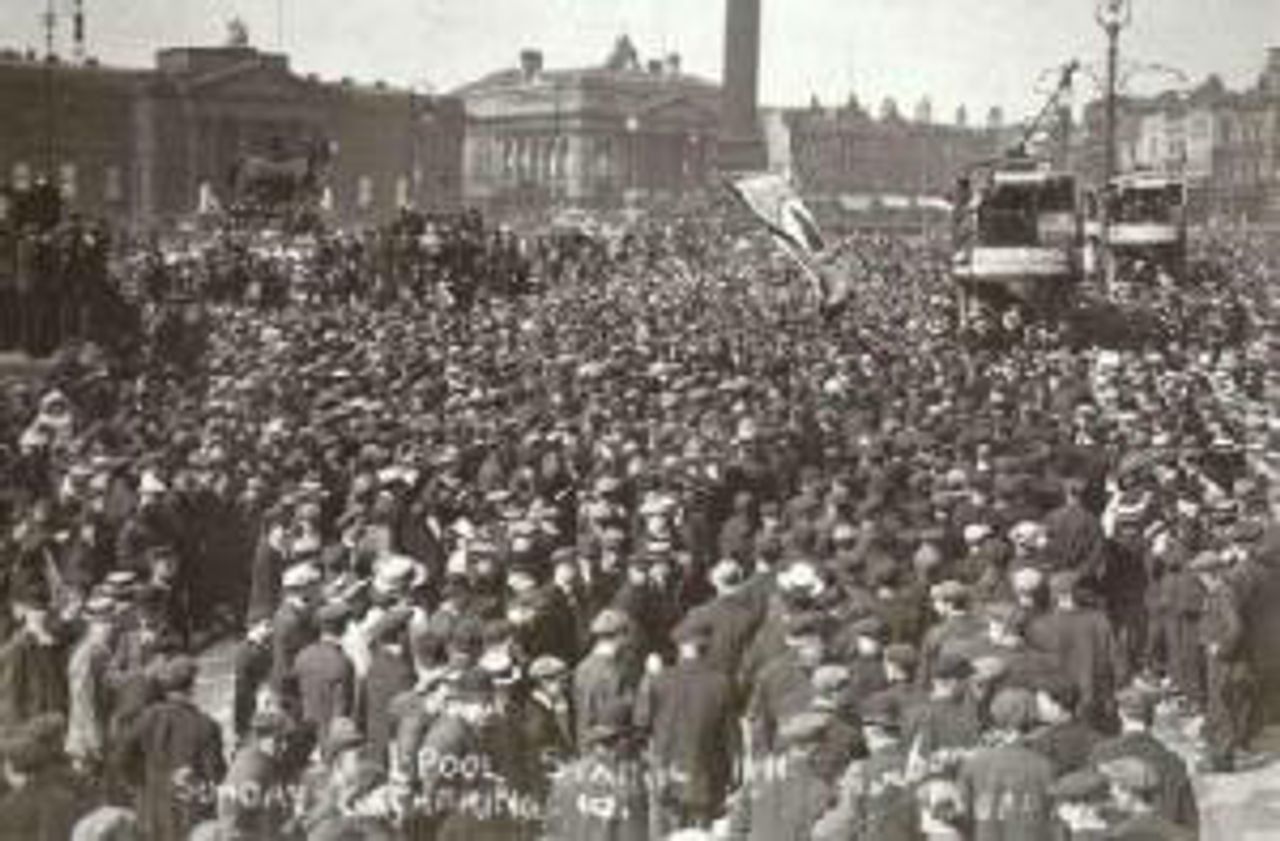This Week in History provides brief synopses of important historical events whose anniversaries fall this week.
25 Years Ago | 50 Years Ago | 75 Years Ago | 100 Years Ago
25 years ago: US economy stagnant
 Ronald Reagan
Ronald ReaganIn the second quarter of 1986, the US economy grew by only 0.6 percent, the Commerce Department reported on August 19, 1986. The measure, then based on gross national product (GNP), was the lowest growth rate in four years. A day earlier, the Federal Reserve Board reported that US factories had operated at a capacity in July of just 78 percent, the lowest reading since 1983 and the third straight monthly decline. In contrast, corporate profits increased in the second quarter by $5.6 billion, the largest increase in two years. A separate report revealed that July was the third straight month in which industrial output fell.
The Federal Reserve Board responded by cutting interest rates on its benchmark-lending rate to financial institutions from 6 percent to 5.5 percent, the lowest level since 1977. It was the fourth rate cut of the year. Alan Greenspan, then an economist with Townsend-Greenspan and Company, commented, “I don’t think economic growth is likely to be initiated by lower short-term interest rates. If there are going to be any benefits, they will be very small.”
Markets reacted by sending the value of the dollar lower and the value of gold upwards. The dollar fell to 153.05 yen, the lowest exchange rate since the 1940s. By lowering interest rates, the Fed hoped not only to stimulate debt-based investment, but to drive down the value of the dollar. This would effectively make US debts owed to foreign creditors less expensive and at the same time make US exports cheaper on the world market.
The data revealed that the supposed growth of the Reagan years had been illusory: the economy had, at that point, been growing at an anemic rate of 2 percent per year since 1980, as compared to over 3 percent per year in the 1970s and over 4 percent per year in the 1960s. The US was facing record trade deficits and a $230 billion federal budget deficit, also a record.
50 years ago: US, Latin American states agree on $20 billion in aid
 John F. Kennedy and Venezuelan President
John F. Kennedy and Venezuelan PresidentRómulo Betancourt at La Morita, Venezuela in 1961
At a gathering of the Organization of American States at Punta del Este, Uruguay, all the nations of the Western Hemisphere with the exception of Cuba agreed to the Kennedy administration’s economic aid plan dubbed Alliance for Progress, a $20 billion 10-year plan that purported to offer a “democratically planned economic and social revolution” for Latin America.
The program had two primary aims. In the first place, it sought to more tightly link the region to US capitalism—in 1961, the US remained the dominant economic power in the hemisphere and the first or second trading partner of virtually every other country. Second, Kennedy meant to provide a face-lift to US foreign policy, widely derided as “Yankee imperialism” in the region. The plan’s stated goals of improving public education and housing and promoting land reform never left the drawing board.
The plan dovetailed with the US aim of pre-empting further nationalist revolutions in the hemisphere, as had taken place in Cuba in 1959. Representing Cuba, Finance Minister Ernesto “Che” Guevara did not sign the agreement—whose funds the US insisted would not go to Cuba anyway—but made overtures to the US, including an indication that Cuba wished to gain diplomatic recognition from Washington. Representatives of the Brazilian, Argentine, and Paraguayan governments communicated the details of Guevara’s efforts to reach an accommodation with the US to American diplomats.
75 years ago: Zinoviev, Kamenev, 14 others accused in “terror plot”
 Zinoviev shortly before his killing
Zinoviev shortly before his killingOn August 14, 1936, the first of the Moscow show trials began with “The Trial of the Sixteen,” among them leading Old Bolsheviks including Lenin’s pre-1917 collaborators Grigory Zinoviev and Lev Kamenev. The 16 faced fantastic and completely concocted charges of collaborating with the Nazi Gestapo and Leon Trotsky, then in exile in Norway, in a plot to assassinate Joseph Stalin and other leading figures in order to establish fascism in the Soviet Union. All were shot within one day of the speedy trial’s conclusion, on August 25, 1936.
In addition to Zinoviev and Kamenev, other Old Bolsheviks were tried and murdered, including Sergei Mrachkovsky, Vagarshak Ter-Vaganyan, and Ivan Smirnov. One by one, the defendants confessed to all of their “crimes.” Their testimony, consisting entirely of self-incrimination, was even more sensational than the cases made against them by the chief prosecutor, Andrey Vishinsky, a former Menshevik who in 1917 had signed an arrest warrant for Lenin.
Trotsky, with Lenin the co-leader of the Russian Revolution, had been exiled from the Soviet Union since 1929. He mounted a vigorous public campaign defying the preposterous charges, stating that he would gladly stand trial before an impartial court. “For political vengeance the trial puts the Dreyfus scandal and the Reichstag fire in the shadow,” Trotsky commented. Under pressure from the Soviet Union, the Norwegian Social Democratic government silenced Trotsky so he could no longer spearhead the exposure of the trials.
Western liberal opinion-makers attempted to legitimize, to the extent possible, the show trials. New York Times correspondent Harold Denny, who was present at the proceedings, commented that the fantastic nature of the confessions showed that “if there is more here than meets the eye, not even the most skeptical observer can guess what it is.”
In fact, Zinoviev, Kamenev, and the others had agreed to the confessions in exchange for sparing their lives and the lives of their families. Stalin then reneged on these promises. As for the political content of the confessions, Trotsky explained, “[O]ne must begin by examining the standardized political capitulations, of which the ‘confessions’ are the sequel and the immediate development. The history of the capitulations extends over the last thirteen years…. For ten years [Zinoviev and Kamenev] had swayed between life and death, first in a political sense, then in a moral sense, and lastly in a physical sense. Can one find in all past history examples of such systematic, refined and fiendish destruction of spines, nerves and all the fibers of the soul?”
Stalin was in the first stages of the extermination of hundreds of thousands of Marxists and old revolutionists, far more than would be killed by Hitler, Mussolini, and Franco. The Trial of the Sixteen set the stage for further purges. Implicated in testimony at the trial were the leading members of the Right Opposition and Stalin’s former collaborators, Bukharin, Rykov, and Tomsky, as well as former left oppositionists Radek and Piatakov. Tomsky, upon hearing he had been fingered, killed himself on August 22, 1936.
100 years ago: Railway strike rocks Britain
 The general strike in Liverpool
The general strike in LiverpoolA strike of an estimated 200,000 railway workers shook Great Britain this week in 1911. The strike saw pitched battles between workers and police, the deployment of tens of thousands of soldiers, and the intervention of the Liberal Asquith government to prevent the emergence of a revolution. The Times of London called the strike “far more serious than anything that has previously occurred in the history of industrial troubles in this country.”
The strike began in Liverpool on August 15, prior to national union recognition of the action. Scores of troops had already been sent into the city to back up the local constabulary. A crowd of 3,000 “of the roughest class,” in the words of one newspaper account, assaulted five vans hauling away strikers to Waltham jail along Vauxhall Street. Royal cavalry, regiments of Hussars, fired into the crowed, killing two and injuring an unknown number, and then charged the crowd with drawn sabers. One cavalryman pulled his revolver and fired from close distance into the head of a worker. Riots erupted elsewhere in Liverpool as well. All over the city, police and soldiers were greeted with volleys of bricks and other missiles hurled from buildings. The port was completely shut down, disrupting international trade, owing to the support of the strike given by the tugboat men and dockworkers. Even Liverpool’s theaters and public buildings were closed.
The eruption in Liverpool, following spontaneous strikes of railway workers elsewhere in the UK, forced the hand of the unions, who remained unrecognized by the railway barons. On August 16, the unions called for a general strike within 24 hours if the railroad magnates refused to recognize them. The size of the response—200,000 workers—shocked observers. The tendency of the struggle, moreover, was toward a still larger national strike. In London, for example, tube liftmen went out on strike, partially shutting down the subway system. On August 22, unions representing all transport workers were to meet to discuss a national general strike.
To prevent the strike spreading to London, 50,000 soldiers were deployed to the city by August 18, armed with rifles and in military uniform. It made the capital seem “an armed camp,” according to one account. The strike was strongest in the north of England and in Wales, where on August 19 police opened fire on a crowd of workers, killing two, and where later in the day three more workers died in an explosion.
Chancellor of the Exchequer, David Lloyd George, on August 19, just two days into the official strike, negotiated a settlement that allowed the union heads to declare victory, while forestalling the spreading of the strike to other sectors of the economy.
